#Delft University of Technology
Text
Apply Now: TU Delft QuTech Scholarship 2023 Study In Netherlands
Apply Now: TU Delft QuTech Scholarship 2023 Study In Netherlands
TU Delft QuTech Scholarship 2023 – TU Delft QuTech scholarship program 2023 applications are opened for the students to apply for this scholarship program to study in Netherlands. QuTech scholarship 2023 is provided by the Delft University of Technology (TU Delft) to the students to study their degree program. International students who want to study their degree program in Netherlands and that…

View On WordPress
#Apply Now: TU Delft QuTech Scholarship 2023 Study In Netherlands#Delft University of Technology#Holland Scholarship#Holland Scholarship TU Delft#Maastricht University Scholarship#TU Delft application fee#TU Delft application procedure#TU Delft Architecture#TU Delft courses#TU Delft fees#TU Delft PhD vacancies#TU Delft Ranking#TU Delft scholarship BSc#TU Delft Scholarship Program in Netherlands 2022 Fully Funded#TU Delft transfer
0 notes
Text
DOES QUANTUM GRAVITY EXIST??
Blog#389
Wednesday, April 3rd, 2024.
Welcome back,
All the fundamental forces of the universe are known to follow the laws of quantum mechanics, save one: gravity. Finding a way to fit gravity into quantum mechanics would bring scientists a giant leap closer to a “theory of everything” that could entirely explain the workings of the cosmos from first principles. A crucial first step in this quest to know whether gravity is quantum is to detect the long-postulated elementary particle of gravity, the graviton.
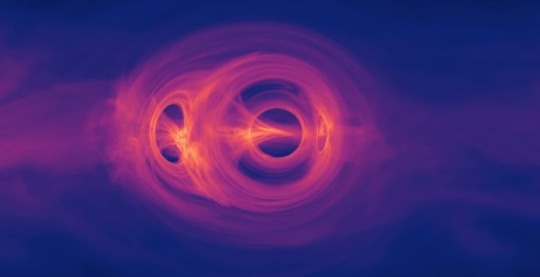
In search of the graviton, physicists are now turning to experiments involving microscopic superconductors, free-falling crystals and the afterglow of the big bang.
Quantum mechanics suggests everything is made of quanta, or packets of energy, that can behave like both a particle and a wave—for instance, quanta of light are called photons. Detecting gravitons, the hypothetical quanta of gravity, would prove gravity is quantum. The problem is that gravity is extraordinarily weak.
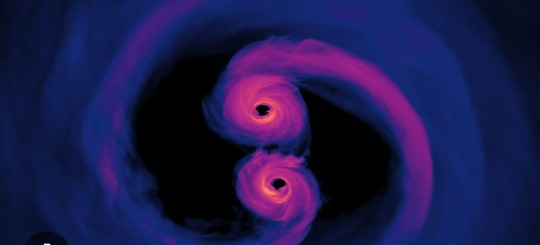
To directly observe the minuscule effects a graviton would have on matter, physicist Freeman Dyson famously noted, a graviton detector would have to be so massive that it collapses on itself to form a black hole.
“One of the issues with theories of quantum gravity is that their predictions are usually nearly impossible to experimentally test,” says quantum physicist Richard Norte of Delft University of Technology in the Netherlands. “This is the main reason why there exist so many competing theories and why we haven’t been successful in understanding how it actually works.”

In 2015, however, theoretical physicist James Quach, now at the University of Adelaide in Australia, suggested a way to detect gravitons by taking advantage of their quantum nature. Quantum mechanics suggests the universe is inherently fuzzy—for instance, one can never absolutely know a particle's position and momentum at the same time. One consequence of this uncertainty is that a vacuum is never completely empty, but instead buzzes with a “quantum foam” of so-called virtual particles that constantly pop in and out of existence.

These ghostly entities may be any kind of quanta, including gravitons.
Decades ago, scientists found that virtual particles can generate detectable forces. For example, the Casimir effect is the attraction or repulsion seen between two mirrors placed close together in vacuum. These reflective surfaces move due to the force generated by virtual photons winking in and out of existence.
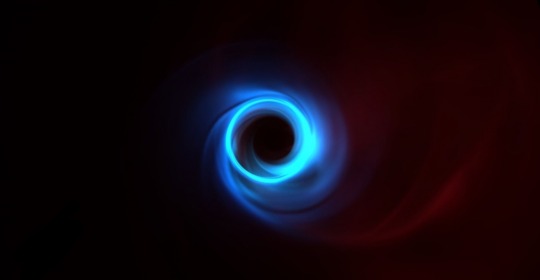
Previous research suggested that superconductors might reflect gravitons more strongly than normal matter, so Quach calculated that looking for interactions between two thin superconducting sheets in vacuum could reveal a gravitational Casimir effect. The resulting force could be roughly 10 times stronger than that expected from the standard virtual-photon-based Casimir effect.

Recently, Norte and his colleagues developed a microchip to perform this experiment. This chip held two microscopic aluminum-coated plates that were cooled almost to absolute zero so that they became superconducting. One plate was attached to a movable mirror, and a laser was fired at that mirror. If the plates moved because of a gravitational Casimir effect, the frequency of light reflecting off the mirror would measurably shift. As detailed online July 20 in Physical Review Letters, the scientists failed to see any gravitational Casimir effect.

This null result does not necessarily rule out the existence of gravitons—and thus gravity’s quantum nature. Rather, it may simply mean that gravitons do not interact with superconductors as strongly as prior work estimated, says quantum physicist and Nobel laureate Frank Wilczek of the Massachusetts Institute of Technology, who did not participate in this study and was unsurprised by its null results. Even so, Quach says, this was a courageous attempt to detect gravitons.”
Originally published on https://www.scientificamerican.com
COMING UP!!
(Saturday, April 6th, 2024)
"HOW DOES A NEUTRON STAR FORM??"
#astronomy#outer space#alternate universe#astrophysics#universe#spacecraft#white universe#space#parallel universe#astrophotography
87 notes
·
View notes
Text
In a major stride towards sustainable industrial fermentation, a team of researchers at Delft University of Technology (TU Delft) in The Netherlands, has unveiled pioneering advancements in the purification of isopropanol and acetone from the fermentation of waste gases. The study, published in the Journal of Chemical Technology and Biotechnology, introduces novel processes that promise to elevate the efficiency and viability of large-scale production.
Isopropanol and acetone have a combined global market of $10 billion. Both chemicals are important industry solvents, and isopropanol also has significant applications as a pharmaceutical ingredient due to its low toxicity. Conventional production relies on fossil carbon-dependent methods, which are becoming less favorable as stricter environmental regulations come into place.
Continue Reading.
67 notes
·
View notes
Link
Microscopy has revolutionized our understanding of the world, allowing us to peer into the intricate details of cells, tissues, and even viruses. However, obtaining precise measurements in these minute worlds is quite difficult. Just like fog can make distant objects look different from reality, so does the light treatment of samples in microscopes, which makes them compressed or elongated along the depth axis especially. For decades now, this problem, known as refractive index mismatch (RIM), has troubled researchers.
Recently, there was a breakthrough at Delft University of Technology. In their work published in Optica journal, they present an innovative approach that could be used to determine depth-dependent re-scaling factors, which are very important in correcting distortions caused by RIM. This blog post delves into the complexities of RIM, explores existing approaches to deal with it, and explains how this new method is changing the world of microscopy.
Continue Reading
44 notes
·
View notes
Photo

Delft University of Technology Lecture Hall / 1966
Johannes Van den Broek + Jaap Bakema
203 notes
·
View notes
Text
Arctic ice is shrinking by almost 13% a decade, according to WWF, prompting warnings from climate scientists that ice-free summers in the Arctic are inevitable by 2050. This, coupled with the very visible evidence of polar bears’ habitat melting, and the threat to the Indigenous people who rely on the Arctic ecosystems for survival, gave Ypma a wild thought.
“The Arctic acts as a sort of mirror or heat shield for the Earth and a substantial part of global warming comes from the Earth’s surface becoming darker,” he says.
“And so I thought: isn’t there some way to maintain that ice sheet for a bit longer until CO2 levels come down and the ice becomes regenerative? I had this naïve idea: why not pump water on top of it?”

Real Ice’s experiment in flooding part of Iqaluktuuttiaq in the Canadian Arctic. Photograph: Arctic Reflections
“I took the fact that it had been researched already as a positive sign, because then you’re not the only crazy person!” he says.
For Arctic Reflections, however, the key aim is to boost the “albedo” – the whiteness of the ice – and its ability to reflect the sun’s rays back to the atmosphere. The Dutch startup’s other idea is to explore whether Arctic currents could spread ice thickened at strategic locations. So instead of needing as many pumps, they could potentially save 100,000 sq km of ice from melting in the summer with just 100 to 1,000 installations.
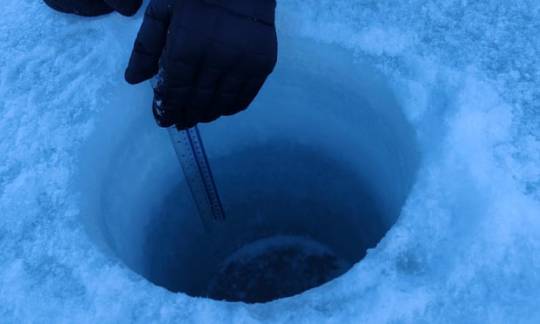
One of the Arctic Reflections team measures a layer of new ice laid on top of older, darker ice in Iqaluktuuttiaq
But there are still unanswered questions, such as how ice thinner than three metres will react to flooding and whether thicker ice will last, says Hayo Hendrikse, assistant professor at Delft University of Technology, who has worked on lab and real-life trials with Arctic Reflections.
“We know we can just pump water on top of ice, flood it and then it will freeze,” he says. “But can we also do it with a positive gain in the end?
“I see a potential for this on a smaller scale, for example, if you want to strengthen natural habitats for polar bears and seals, where the sea ice in summer could survive a bit longer if we target specific fjords or bays.
But Hendrikse adds: “It’s not a solution – it’s a sticking plaster.”
Julienne Stroeve, professor of polar observation and modelling at University College London, says it would probably be impossible to act on a large-enough scale to have a real impact on the climate.
6 notes
·
View notes
Text
Amorphous materials are akin to a randomly piled set of Legos, where atoms lack consistent arrangement. But contrary to expectations, this randomisation doesn't result in fragility. In fact, amorphous silicon carbide is a testament to strength emerging from such randomness. The tensile strength of this new material is 10 GigaPascal (GPa). To grasp what this means, imagine trying to stretch a piece of duct tape until it breaks. Now if you’d want to simulate the tensile stress equivalent to 10 GPa, you'd need to hang about ten medium-sized cars end-to-end off that strip before it breaks.
11 notes
·
View notes
Text
-Karen Aardal-

Karen I. Aardal is a Norwegian and Dutch applied mathematician, theoretical computer scientist, and operations researcher. Her research involves combinatorial optimisation, integer programming, approximation algorithms, and facility location, with applications such as positioning emergency vehicles to optimise their response time. She is a professor in the Delft Institute of Applied Mathematics at the Delft University of Technology, and the chair of the Mathematical Optimisation Society for the 2016–2019 term.
Operations research
Combinatorial optimisation
Integer programming
Approximation algorithm
12 notes
·
View notes
Text
When Hurricane Ian pummeled Florida last week, it left a stunning trail of physical devastation in its wake. Entire neighborhoods vanished beneath water, cities were shredded by 150-mile-per-hour winds, and thousands of people lost their homes overnight.
Though the storm has since dissipated, it will bring even more turmoil to the Sunshine State in the coming months — but this damage will be financial rather than physical. Ratings agencies and real estate companies have estimated the storm’s damages at anywhere between $30 and $60 billion, which would make it one of the largest insured loss events in U.S. history.
Wind damage is covered by standard homeowner’s insurance, and the payouts necessitated by Hurricane Ian’s extensive wreckage are likely to accelerate the collapse of the state’s homeowner’s insurance industry, driving private companies into bankruptcy and forcing thousands more Floridians into a state-run program with questionable long-term prospects. The process offers an early view of the way that natural disasters fueled by climate change threaten to upend regional economies.
Home insurance costs are poised to skyrocket for all Floridians — not just those who live in the places most vulnerable to major storms. The state will be forced to impose new taxes and penalties as it tries to keep the market afloat. New burdens will fall largely on low- and middle-income homeowners. For many working class Floridians, homeownership may become impossible to afford as a result.
“We already have a housing affordability crisis, and now we’re adding this new pressure,” said Zac Taylor, a professor at the Delft University of Technology who has studied climate risk in Florida and grew up in the city of Tampa. “Insurance is potentially the thing that is destabilizing homeownership — ironically, because it’s the thing that’s supposed to protect [homeownership] and make it possible.”
While homeowner’s insurance nationwide averages around $1500 a year, Floridians already pay almost three times as much. The state’s insurance market has been struggling ever since Hurricane Andrew made landfall south of Miami in 1992 and damaged more than 150,000 buildings. After Andrew, large private insurers like Travelers and Allstate froze their business in the state rather than risk having to pay for future disasters. This led to the creation of a public option called Citizens, which functions as an “insurer of last resort” for people who can’t find private coverage. The state also subsidized small “specialty” insurers who would only offer homeowner’s coverage in Florida, shifting market share away from national companies.
But this local market has begun to teeter in recent years, even in the absence of any major hurricanes. One reason is that Florida has become a hotbed for sham roof-repair lawsuits. Shady contractors approach a homeowner and offer her a free new roof, then file a claim with her insurer on her behalf, even if her roof didn’t actually suffer any insurable damage. Then, the contractors litigate the claim until the insurer settles. This has gotten quite expensive for insurers in the state: Florida accounted for 8% of all homeowner’s insurance claims in the United States in 2019, but more than 75% of all insurance lawsuits.
At the same time, it has become much more expensive for insurance companies to purchase their own insurance. The companies buy this so-called “reinsurance” to guarantee that they have enough money to make large payouts after big disasters, but the large global companies that sell reinsurance have gotten cagey about offering it in Florida, considering that the state has built millions of additional homes in areas vulnerable to natural disasters even as climate change increases their risk. The reinsurance companies have raised prices to account for this, and many local insurers have struggled to keep up with the costs.
The high costs of litigation and reinsurance had already driven six local insurers bankrupt so far this year, even before Hurricane Ian. In the summer, a ratings firm called Demotech threatened to downgrade several other specialty insurers, saying they weren’t stable enough to deal with a big storm. That downgrade would have made them worthless in the eyes of major lenders and effectively removed them from the market. It caused a flurry of concern from state lawmakers, one of whom said the market was about to “collapse.”
Hurricane Ian is likely to hasten that collapse by driving at least a few more homeowner’s insurance companies into bankruptcy. If Ian’s damages are close to the estimated $30 to $50 billion, it would be especially catastrophic for Florida’s already-struggling specialty insurers. The companies that do survive will have to pay even more for reinsurance, which will force them to further raise prices.
“I would predict the price of insurance will go up in Florida, or, certainly insurers will be looking for price increases,” Alice Hill, a climate change and insurance expert at the Council on Foreign Relations, told Grist. “It’s proving to be risky, particularly with climate change, looking at these storms intensifying more quickly.… Homeowner’s insurance is written on a year-by-year basis, so if a big event comes through, there’s a change next year.”
New bankruptcies and price hikes on the private market would drive thousands more Floridians to Citizens, the public insurance provider that the state established after Hurricane Andrew. The number of Floridians enrolled in Citizens has already surged over the past decade as other private insurers have collapsed, and this year the program surpassed 1 million policyholders for the first time, having doubled in size over two years. It controls around 15% of the insurance market — and more than twice that in especially vulnerable places like Miami.
“You’re going to see a big increase in the number of policies going to Citizens, and you could see a significant portion of the private market just go away,” said Charles Nyce, a professor of risk management at Florida State University and an expert on the state’s insurance market. “And the more of the market Citizens takes, the more at risk the state is.”
That’s because the state is on the hook to help Citizens pay out claims after big storms. Citizens has about $13 billion right now, and early estimates suggest that claims from Ian will only cost the program around $4 billion, so it’s not in any immediate financial jeopardy. But the program will balloon in size over the coming years as it absorbs all the people who lose coverage on the private market after Ian, and its expanding roster will leave it more vulnerable to the next big storm. If another Ian comes around, Citizens might find itself short on cash.
This would force Citizens to make what is called an assessment, or a “hurricane tax” in local lingo. When the program faces financial difficulties, it can impose a surcharge on every person in Florida who buys any kind of property insurance, from home insurance to auto insurance to business insurance. This surcharge acts as a kind of tax subsidy for people in vulnerable areas: Everyone in Florida ponies up to ensure the state can help storm victims rebuild.
“That’s the biggest concern I have,” said Nyce. “Say you’re a single mom working in Orlando living in an apartment, but yet you have to own a car. Now you’re paying an assessment on your auto insurance to subsidize someone who lives on the beach.”
Since Hurricane Ian is unlikely to stem the tide of new arrivals to Florida — and since the only insurance option for these new arrivals will be Citizens — Nyce said that these assessments could become much more common as the years go on. In the past they have never exceeded around 1.5% of annual insurance bills, but future storms could drive that number higher.
Citizens can also issue bonds to fund payouts, said Nyce. But because it would issue those bonds against the state’s credit rating, doing so could dampen the state’s own ability to borrow money, again leading to higher costs down the road. And the more tax revenue the state spends propping up Citizens, the less it has to fund other essential services like education and transportation.
The upshot is that Hurricane Ian could make life in Florida a lot more expensive for everyone in the state who owns a home or a car. Decades of rapid development and a new era of supercharged storms have created a risk burden that is impossible for the private insurance market to bear. Now, in the aftermath of Ian, the state’s 21 million residents will assume more and more of that risk, and their wallets will see its earliest effects.
For an example of how these costs might impact vulnerable Floridians, Taylor pointed to the community of Miami Gardens, a majority-Black community in the Miami metroplex that is one of the last places in the region where homes are affordable.
“How is this community supposed to reduce its risk?” they said. “How are homeowners going to deal with this? We’re talking potentially the equivalent of multiple monthly mortgage payments … and this is not poised to go [back] down. Fewer and fewer people are going to be able to afford their houses.”
#us politics#news#grist#2022#florida#homeowners insurance#Hurricane Ian#Florida insurance market#insurance market#travelers insurance#allstate insurance#Citizens insurance#insurance claims#insurance lawsuits#hurricane tax#Florida credit rating
8 notes
·
View notes
Video
Cell Block
Cells are often on the move, but how they navigate obstacles is a little mysterious. Here researchers create a sort of assault course for young pre-osteoblasts – cells destined to develop into bone. A microscope zooms down from above capturing the scene after eight days of challenging growth around a hemispherical bump (cells seem to prefer valleys to mountains). But these cells, highlighted in red with DNA in blue, are adapting. They align their stress fibres – stretchy bundles of actin used to change their shape and direction. Researchers believe cells align some of their stress fibres in the direction of movement while others brace across the cell to limit bending. Cells working together means the tissue can reach out between these obstacles, like climbers strung together navigating a mountain pass (although a million times smaller). Such insights may suggest ways to support migrating cells during development, or tissues remodelling after injury.
Written by John Ankers
Video from work by Sebastien J. P. Callens and colleagues
Department of Biomechanical Engineering, Delft University of Technology (TU Delft), Delft, The Netherlands
Video originally published with a Creative Commons Attribution 4.0 International (CC BY 4.0)
Published in Nature Communications, March 2023
You can also follow BPoD on Instagram, Twitter and Facebook
#science#biomedicine#cells#bone#osteoblasts#actin#tissue development#immunofluorescence#cell migration
14 notes
·
View notes
Text
Apply Now: 2023 Erasmus PhD Position in Business and Management (Fullyfunded)
Apply Now: 2023 Erasmus PhD Position in Business and Management (Fullyfunded)
Applications are now invited for the Fully-Funded Erasmus PhD Positions in Business and Management 2023. Interested international students with excellent academic records are invited to fill a number of vacant PhD positions at Erasmus University Rotterdam. These are fully funded and highly competitive PhD positions available competitive to international students to study in Netherlands.
Since…

View On WordPress
#Apply Now: Erasmus PhD Position in Business and Management (Fully-Funded)#Delft University of Technology PhD vacancies#Erasmus Mundus PhD Scholarship 2023#Erasmus University Rotterdam PhD application#Fully Funded PhD in Amsterdam#Fully funded PhD positions in Europe#Fully funded PhD positions in USA#Fully Funded PhD Programs in Finland#Fully funded PhD Vacancies#Fully Funded Scholarships for international students 2023-2024#How to apply for Erasmus Mundus scholarship 2023#PhD in Management#RSM PhD#University of Bergen PhD#University of Luxembourg PhD vacancies
0 notes
Text

Righteous Dutchman
Protected his workers.
Frits Philips was a Dutch businessman who saved thousands of Jewish employees during the Nazi occupation of Holland.
Frits was born to a prosperous family in the Netherlands in 1905. His father and uncle owned the Philips electronics company, founded as one of the earliest successful lightbulb manufacturers in 1891and over the next few decades branching out into other products, such as vacuum tubes and radio technology.
A friendly, intelligent boy with a deep Christian faith, Frits attended Delft University of Technology, where he received a degree in mechanical engineering in 1929. That same year, he married Sylvia van Lennep, with whom he would have seven children.
Frits and Sylvia were introduced to the Oxford Group, a Christian organization founded by Frank Buchman, an American Lutheran minister. Buchman believed that all human problems stem from fear and selfishness, and the only way to overcome these destructive influences is to “surrender one’s life to God’s plan.” Buchman’s teachings were a strong influence on Alcoholics Anonymous and the twelve-step method for achieving freedom from addiction.
In 1935, Frits was appointed to the board of Philips and began serving as vice-director. Meanwhile, in nearby Germany the Nazi party rose to power. Hitler invaded Poland in 1939, and by early 1940 it became apparent that he would soon invade the Netherlands. At this point, most of the Philips family left the Netherlands and moved to the United States. Frits was unwilling to abandon the Philips company and workers, and he alone stayed behind to “mind the store,” successfully leading the company through the turbulent war years.
As the boss of Philips, Frits was both liked and respected by his thousands of employees. He truly cared for them and made sure they were well paid and enjoyed good working conditions. As the Nazi occupiers began arresting, deporting, and murdering Jews, Frits immediately pledged to do whatever necessary to support his many Jewish employees.
He separated the Jews from the rest of the workers, making sure they worked in a protected location. He gave them food rations, which became known as “Philips-prak” named after a popular Dutch meal of soup, mashed potatoes, carrots and meat. The Philips company was forced by the Nazi occupiers to contribute to the war effort, and Frits used this to protect the Jewish workers. He convinced the Germans that the Jewish workers at Philips were absolutely indispensable, and that factory productivity would plummet without them at the company. For this reason, 382 Jews were saved from deportation and continued working for Frits until the occupation ended.
In 1943, Philips factory employees went on strike to protest the Nazi occupation, and as their boss, Frits bore the brunt of the punishment: he was incarcerated in Camp Vught, the only SS concentration camp outside of Germany. After spending three months in brutal conditions at Vught, Frits was released. Now that he and his workers were being watched, Frits worried that he wouldn’t be able to protect his Jewish employees from deportation. At this point, he opened a Philips lightbulb factory in Norrkoeping, Sweden, and began transferring the Jews there, knowing they���d be safe in Sweden, a neutral country. After the war ended, Frits kept the factory open to employ Jews who’d been liberated from the camps and had nowhere to go.
Frits’ heroic activities extended far beyond Holland. In their book “Blood from a Stone” (2003), Richard Hammer and Yaron Svoray described how the Philips company, under Frits’ leadership, helped Jews throughout Europe. “Philips… did not buy into the Nazi philosophy regarding Jews. The safety, and rescue, of Philips’ Jewish employees became a major concern as the Nazi tide rolled over Europe. At its Austrian subsidiary, all the Jewish workers were sheltered, declared essential to the war effort, and all survived under Philips’ protection. At its subsidiary in Lithuania, Philips’ executives provided visas to Curacao for Polish and Baltic Jews in its employ. This despite regulations promulgated by the Nazi regime in Holland forbidding Dutch-based companies from aiding Jews in any manner, Philips managed to rescue nearly five thousand.”
As CEO of one of the Netherlands’ most successful companies, Frits received many awards and honors, including “Dutch entrepreneur of the century,” and “Knight in the Order of the Netherlands Lion.” However the most meaningful award this heroic businessman received was “Righteous Among the Nations” by Israeli Holocaust Museum Yad Vashem in 1996.
Frits Philips died in 2005, a few years after his beloved wife Sylvia. He was survived by his seven children and many grandchildren and great-grandchildren.
For using his position and resources to save thousands of Jews from Nazi death camps, we honor Frits Philips as this week’s Thursday Hero.
Accidental Talmudist
30 notes
·
View notes
Text
As an environmental problem researcher:especially about water issues (2/2)
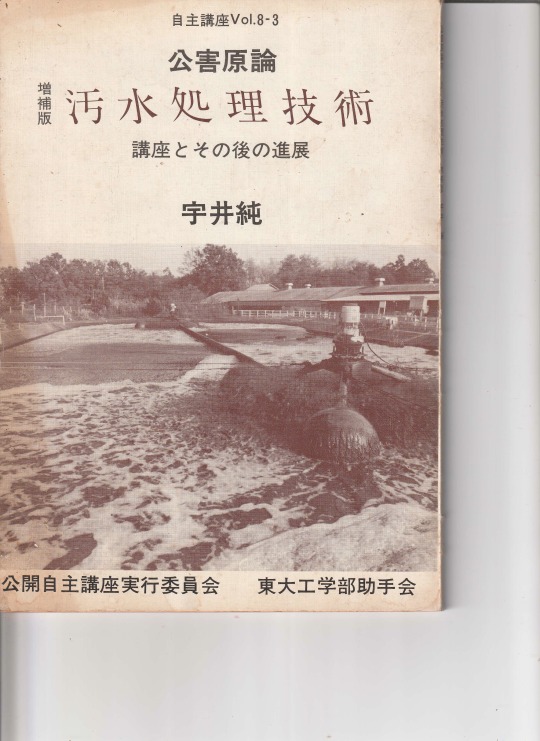
A Book written by Jun Ui(宇井純)
Sewage treatment technology introduced by Jun Ui: Oxidation Ditch
Mr.Jun Ui, who is now dead and was a leader in pollution problems (and one of my teachers: an assistant in the Department of Urban Engineering, Faculty of Engineering, University of Tokyo), was a versatile person, but he went to see a sewage worker in Delft, the Netherlands. He visited the treatment plant, became interested in the facility: Oxidation Ditch (translated into Japanese, "Oxidation Groove"), and stayed for several days to observe it. According to the engineer who developed it, "Many Japanese researcher visit this facility, but no one else stays and observes for a long time like you."
Jun Ui understood the principle of this oxidation ditch, and he himself built a sewage treatment plant for individuals and groups that he understood in order to spread this technology to Japan, and conducted demonstration experiments. I have been involved in it for a while.
The basis of sewage treatment technology is the decomposition of "organic matter" in water. Organic matter is a molecule formed by carbon atom (C) as a nucleus, but there are almost infinite types of this molecule. Sugar, soy sauce, gravy, manure ... there is no limit to the number. Anyway, it is a process of sending oxygen (O) in the air into water, reacting it with organic matter, converting it to carbon dioxide (CO2), and returning carbon to the air. It is called aeration or oxidation.
This method, now called the "activated sludge method," introduces healthy microorganisms in the soil into the water and completes the oxidation by the action of these microorganisms. Certainly, organic matter can be decomposed fairly well in this process. However, sewage cannot be completely purified by itself. Pollutants other than carbon include nitrogen (N) and phosphorus (P). These are difficult things. Even if organic matter is removed and the water looks clean at first glance, if N, P, etc. remain, they will come out into the environment, and algae etc. will propagate using these as minerals, and organic matter will be produced again. The water is polluted and the precious oxidation becomes meaningless.
At this time, the sewage treatment technology shows two directions. One is the "continuous" process and the other is the "batch type" process. The continuous method is the current mainstream sewage treatment method in which sewage flows out of the plant and new sewage always flows into the pond. Therefore, multiple ponds are set up, and one pond "has only one function." On the other hand, the batch type has multiple functions in one pond. It has four functions of "inflow, stirring, precipitation, and outflow". Jun Ui chose this batch type, not to mention the oxidation ditch (oxidation groove).
The process of removing C is called (primary processing), but in the case of a continuous system, the process of removing N and P is processed in the second and third ponds that specialize in N and P. (Secondary and tertiary processing). In particular, in the case of N, activated sludge deprives HNO3 of O from N, which has changed from ammonia (NH3) to nitric acid (HNO3) as a result of treatment and oxidation without adding O, and N becomes N2 in the air. It will come out (denitrification). This is a chemical reaction called reduction, which is the opposite of oxidation. To remove N, it is necessary to repeat these two reactions. However, in the case of the continuous type, since a large amount of O has already been added and aerated, there is a lot of waste in removing it, and oxygen deficiency and oxygen excess are repeated, resulting in a high cost of sewage treatment. It will jump up. Indeed, sewage treatment is a gold eater. Think about it, the power that an air conditioner takes to drive air is enormous, but if it's water, the cost of sewage treatment is even higher.
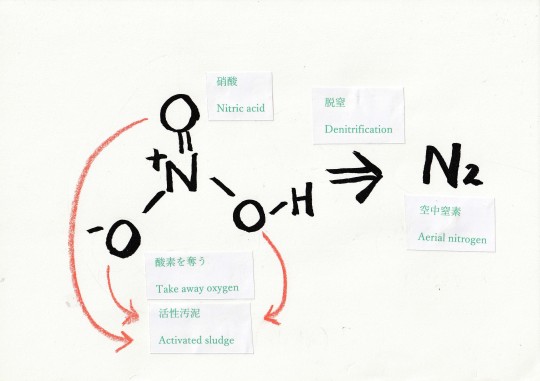
Denitrification
In the case of the batch type, depending on the operation, all of the first, second and third processes can be performed in one pond. By performing the steps of aeration (stirring) and precipitation, the above-mentioned denitrification controls the oxygen concentration to the limit of oxygen concentration that can be changed into two steps at any time, and the pond is as shallow as a "groove". Aeration can be done with the "eel farming water wheel". Also, because it is shallow, it will not drown even if a child gets stuck. A major feature of the batch system is that the inflowing sewage and the substances and microorganisms contained in it will "always" remain in the pond, although they will gradually dilute. These are favorable features in terms of the stability of the treated water. And here is the advantage over continuous process.
More troublesome than N is P. Basically, the most basic and reliable treatment method for P, which cannot be flown in the air, is to take out a certain amount of activated sludge itself, which contains a large amount of it, from the pond and separate it from the water. Primitive is primitive, but if sludge can be returned to the soil, this is the best. Well, the same is true for C and N. In that sense, neither the continuous type nor the batch type can fully function under the current situation where sewage contains a lot of harmful substances. Things that cannot be returned to the soil.
A word of the day: C, N, P are originally fertilizers for growing plants. If you return the wastewater and manure to the farmland without modern sewage treatment, no problems will occur. In this respect, humanity's thinking is insanely stupid.
#water issues#Jun Ui#Sewage treatment technology#Oxidation Ditch#Delft#activated sludge method#nitrogen#phosphorus#Denitrification#batch system#continuous process#environmental problem researcher#rei morishita
6 notes
·
View notes
Photo
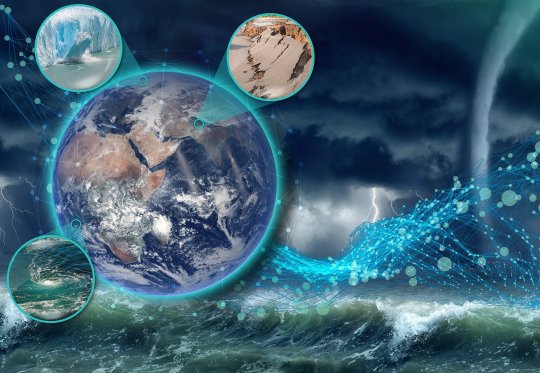
ESA selects Harmony as tenth Earth Explorer mission Following preparatory activities and a stringent process ESA Member States today formally selected Harmony for implementation as the tenth Earth Explorer mission within the FutureEO program. This unique satellite mission concept is, therefore, now set to become a reality to provide a wealth of new information about our oceans, ice, earthquakes and volcanoes—which will make significant contributions to climate research and risk monitoring. Pivotal to ESA's FutureEO program, Earth Explorers are pioneering research missions that show how novel observing techniques lead to new scientific findings about our home planet. Advancing science and technology, they address questions that have a direct bearing on climate change and societal issues such as the availability of food, water, energy, resources and public health. Earth is a highly dynamic system where the transport and exchanges of energy and matter are regulated by a multitude of processes and feedback mechanisms. Untangling these complex processes to better understand how Earth works as a system is a major challenge. Thanks to Harmony, the picture is set to become a whole lot clearer. By advancing science, Harmony will, in turn, also help address societal issues such as those laid out in the World Climate Research Program's Grand Challenges and a number of the UN's Sustainable Development Goals. This exciting new mission will comprise two identical satellites orbiting Earth in convoy with a Copernicus Sentinel-1 satellite. Each Harmony satellite will carry a receive-only synthetic aperture radar and a multi-view thermal-infrared instrument. Together with observations from Sentinel-1, Harmony will deliver a wide range of unique high-resolution observations of motion occurring at or near Earth's surface. Harmony's Lead Investigator, Paco López-Dekker, from the Delft University of Technology in the Netherlands, explained, "Harmony will, for example, be used to quantify the processes that govern the exchange of momentum, heat and moisture between the ocean surface and the air above. These exchanges influence processes in the lower atmosphere, drive weather patterns, and affect our climate. "It will also be used to study deformation and flow dynamics at the rapidly changing ice-sheet edges for a better understanding of sea-level rise. "In addition, Harmony will observe the motion of mountain glaciers, which are essential in providing freshwater to hundreds of millions of people, so the importance of understanding how they are changing cannot be overstated. "And, Harmony will be used to measure small shifts in the shape of the land surface such as those related to earthquakes and volcanic activity, and therefore contribute to risk monitoring." Over the last four years, the Harmony concept has undergone strict feasibility scrutiny and a pre-development process, culminating in ESA's Program Board for Earth Observation (PB-EO) accepting ESA's proposal, based also on the science advise and the recommendation from the Advisory Committee for Earth Observation (ACEO). René Forsberg Acting Chair of ESA's Advisory Committee on Earth Observation, said, "ESA's pioneering Earth Explorer research missions are fundamental to Europe's position as a world leader in Earth observation. We are extremely happy to see Harmony join this extraordinary family of missions and we are certain that will bring significant advances in our understanding of the workings of our fragile planet." Simonetta Cheli, Director of ESA's Earth Observation Programs, added, "Indeed, Earth Explorers are pivotal to our FutureEO program—a program that harnesses novel ideas to develop pioneering satellite missions and concepts and to test innovative technologies. By nurturing imaginative new ways of using Earth observation, FutureEO enables scientific excellence to flourish to address societal challenges of tomorrow. "The novel technology and observing techniques proven by the Earth Explorers are also key to developing 'operational' missions, such as Europe's Copernicus Sentinel missions, which deliver systematic data for environmental services. "In the case of Harmony, we envisage that its technology will be important for enhancing the capabilities of the Copernicus Sentinel-1 Next Generation mission." For Harmony, the next step will then involve fine-tuning the mission design and the subsequent build, with a view to launching the satellites in 2029.
3 notes
·
View notes
Text
A team of designers in the Netherlands have created a clever sofa that doubles as an abortive hospital.
The unique furniture piece was created by designers at the Delft University of Technology in the Netherlands. It consists of a comfortable sofa that can be converted into an abortive hospital if needed. The sofa is fitted with a medical-grade mattress, medical equipment such as a birthing pool, and a foldable privacy screen.
The sofa is designed to be used in emergency situations, such as when a woman needs to undergo an abortion in a place where it is not legally permitted. In such cases, the sofa can be quickly converted into a private and safe space for the woman to receive medical treatment. The designers hope that their invention could help reduce the number of unsafe abortions that occur in places where the procedure is illegal.
The team plans to make the sofa available at a low cost, so that it can be used in any location. They hope their invention will help empower women in places where it is difficult to access safe abortion services.
1 note
·
View note
Text

Russian military satellite seems to be chasing a new U.S. spy satellite
A recently launched Russian satellite with unknown capabilities is suspiciously approaching what is supposedly a new U.S. spy satellite.
Diego Alves By Diego Alves 08/04/2022 - 13:00 in Space, Military, Technology
Launch of Kosmos-2558 at the Plesetsk Cosmodrome in Russia. Credit: Russian Ministry of Defense
Russia has launched the satellite "14F150 Nivelir" into orbit on a mission dubbed Kosmos-2558, and its current orbital path may soon put it close to what is reported as the designated spy satellite USA-326.
The Kosmos-2558 satellite was launched on August 1 at 20:25 UTC from the Plesetsk Cosmodrome in Russia, as a payload on the Soyuz-2.1v rocket. Kosmos-2558, which the Russian Ministry of Defense itself said was a military satellite in an official statement, was then deployed in a Synchronous Orbit of the Sun (SSO), which is usually used by satellites that orbit through the polar regions of the globe so that its orbit is in sync with the Sun. Its exact purpose is unknown at the moment, but it has been described as an "inspector" satellite, a term that is often associated with so-called "killer satellites".
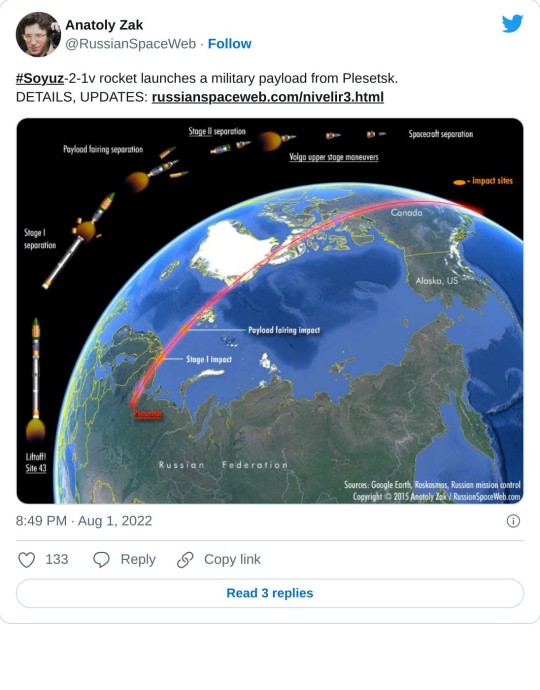
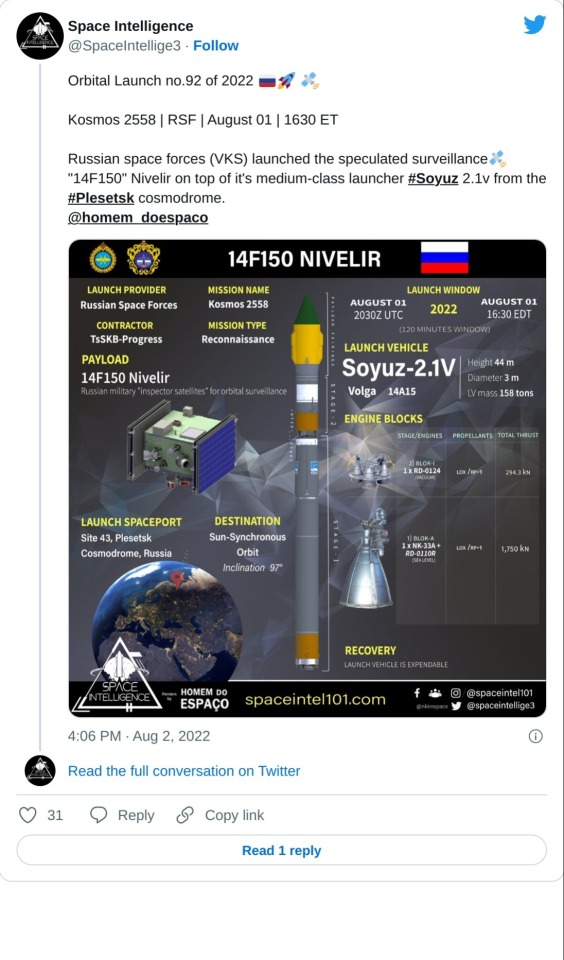
Although the mission of Kosmos-2558 has not yet been officially disclosed, it is important to note that the USA-326 satellite is also currently deployed in a SSO. In fact, Jonathan McDowell, astronomer at the Center for Astrophysics, or @planet4589 on Twitter, noted that the current orbital path of Kosmos-2558 will soon place it 80 km from what is believed to be the USA 326 satellite. For reference, the Center for Astrophysics is a collaborative effort carried out jointly by the Smithsonian Astrophysical Observatory and Harvard College Observatory.
Independent online analysts also used a Notice for Air Missions provided by the Federal Aviation Administration to compare the launch window of the Kosmos-2558 with the orbital plan of the USA 326 and were quick to point out that the American satellite would pass over Plesetsk approximately at 20:25 UTC on August 1. As expected, the Kosmos-2558 was launched at the exact moment the USA 326 passed over the region and has since established itself at an orbital altitude that will allow it to maneuver closer to the American satellite in the coming days.
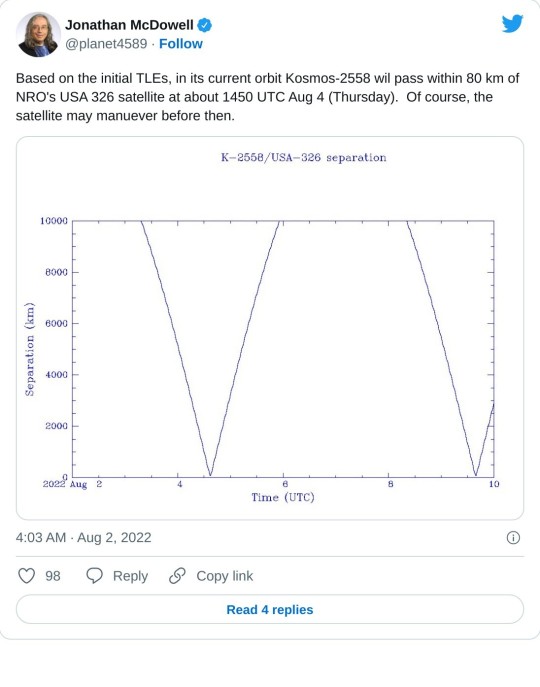
Why Russia would want to use Kosmos-2558 to spy on the USA-326 could be explained by the mission of the American satellite. The USA-326 was launched in February this year by a SpaceX Falcon 9 rocket from Vandenberg Space Force Base, its mission designated NROL-87, which is a classified national security operation led by the National Reconnaissance Office (NRO) in partnership with SpaceX. A press release shared by the NRO after the initial launch stated that the NROL-87 was designed, built and now operated by the NRO to support its "air reconnaissance mission", which is largely focused on protecting national security through the exploitation of space information. Based Intelligence, Surveillance and Recognition (ISR).
The independent analyst Dr. Marco Langbroek, professor of situational awareness of optical space at Delft University of Technology in the Netherlands, went on to speculate on the type of satellite that the USA-326 can be. In one of his blog posts, Dr. Langbroek wrote that the satellite could be a next-generation electro-optical imaging intelligence (IMINT) equipment, which would align with what we know about the ISR focus of the USA-326 mission. Are IMINT satellites used ?? mainly to monitor land and maritime activity, and U.S. military capabilities in this space exceed any other on the planet.
In his blog post, Dr. Langbroek adds that there are indications of the orbital characteristics of the USA-326 that the satellite is part of a follow-up program of the NRO KH-11 spy satellite that Russia deployed an inspector satellite called Kosmos-2542 to observe in 2020. If Dr. Langbroek is correct and the USA-326 is a next-generation IMINT satellite or is distinct in some other capacity, such as being a successor to the KH-11, this could help explain why Russia would like to at least take a closer look. However, the Kremlin may also have more detailed information about the specific types of operations that the USA-326 will be carrying out that could have further inspired the suspicious launch and the orbital path.
This would not be the first time that Russia has deployed an inspection satellite to monitor the space presence of the United States. In 2018, Russia announced that four objects would be thrown into space, which directly conflicted with the data obtained by the U.S. Military Combined Space Operations Center, showing that five objects had actually violated the atmosphere. Authorities began to suspect that the fifth object was an inspection satellite, as Russia had previously announced the launch of four of these satellites between 2014 and 2017. The last of which subsequently deployed three additional subsatellites that were launched in the summer and fall of 2017.
The rocket and payload for the Kosmos-2558 mission at the Plesetsk Cosmodrome in Russia, before launch. Credit: Russian Ministry of Defense
While Russia, China and the United States are working on proposals for a robotic space vehicle (or "space apparatus inspector" as named by Russia) to carry out inspections and repairs in orbit and could have been the fifth object, these systems have a darker secondary potential use - to manipulate and monitor opposing satellites in orbit. It is also possible that the fifth 'inspector' satellite can still be equipped with surveillance technologies, electronic warfare and other interference capabilities, or even weapons. At the very least, it could collide with another satellite, deactivating or destroying it.
Tags: SpaceSpace - USARFSAF - Russian Federation Aerospace Force/Russian Aerospace ForceSatellitesSpace TechnologyUSSF - United States Spacial Force / U.S. Air Space Force
Previous news
IMAGES and VIDEOS: USAF moves 4 B-2 Spirit strategic bombers to Australia
Next news
Indian Navy officially receives aircraft carrier "Vikrant"
Diego Alves
Diego Alves
Related news
SPACE
US Senate seeks $2 billion USSF budget increase for missile defense
08/02/2022 - 5:00 P.M.
SPACE
NASA plans to send 2 helicopters to Mars for rock return mission
07/29/2022 - 4:00 PM
SPACE
China launches new space station module
07/25/2022 - 6:00 PM
MILITARY
Russia may have knocked down another of its fighter jets - were they aiming at an American missile?
07/21/2022 - 08:32 AM
MILITARY
Russia apparently accidentally shot down its new Su-34M jet
07/18/2022 - 9:05 PM
SPACE
Satellite developed at ITA is sent to NASA
07/15/2022 - 07:26 AM
HOME Main Page Editorials Information Events Collaborate SPECIALS Advertise About
Cavok Brasil - Digital Tchê Web Creation
Commercial
Executive
Helicopters
History
Military
Brazilian Air Force
Space
SPECIALS
Cavok Brasil - Digital Tchê Web Creation
2 notes
·
View notes